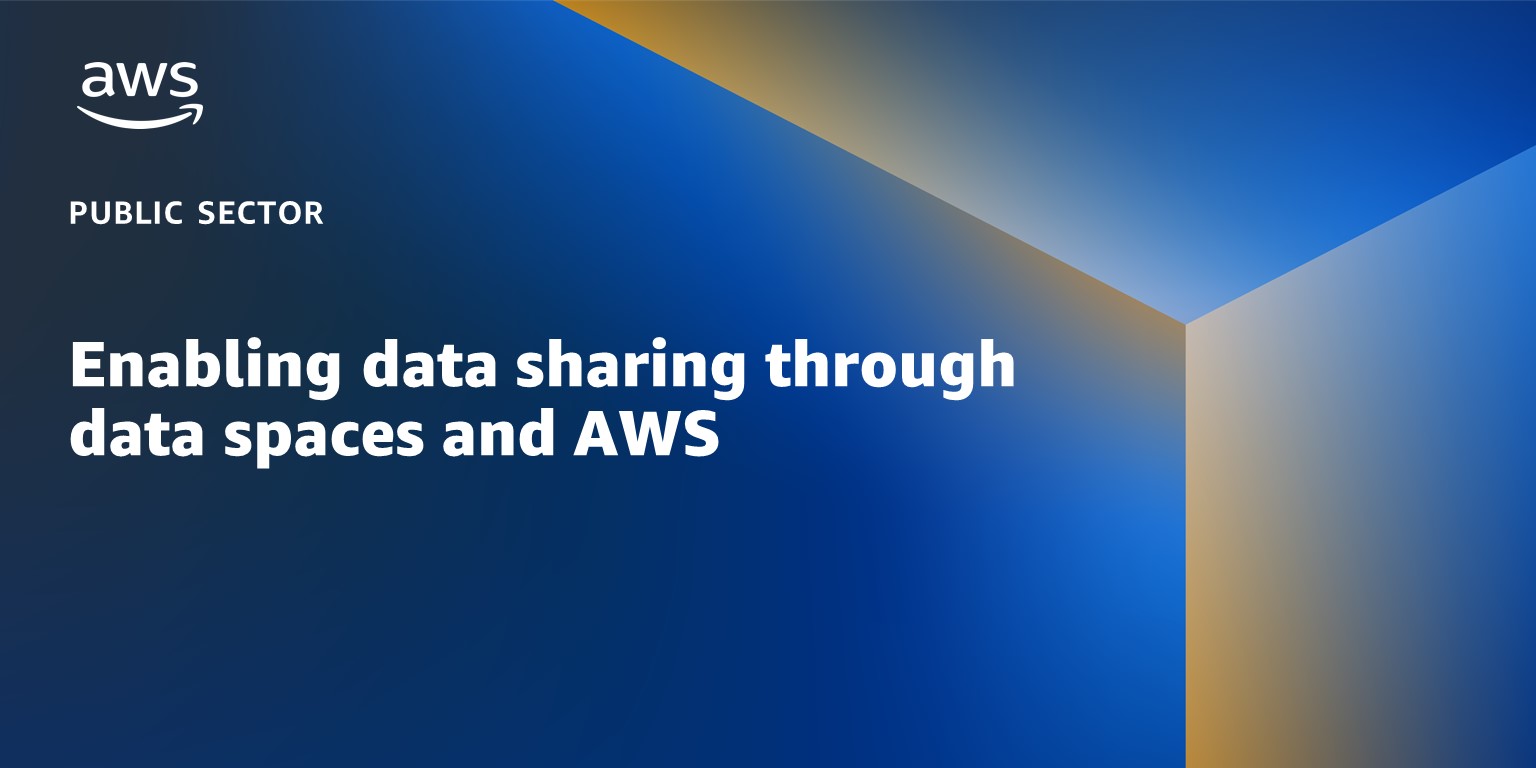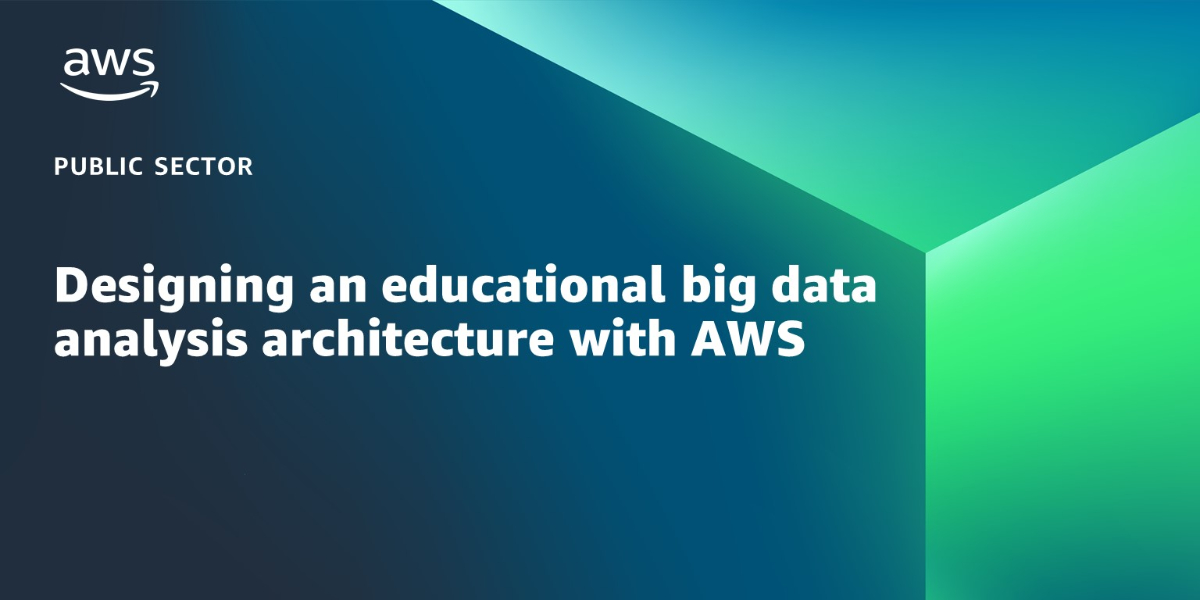AWS Public Sector Blog
Tag: analytics
Developing a modern data-driven strategy in the public sector
Public sector organizations across the globe want to harness the power of data to make better decisions by putting data at the center of every decision-making process. Data-driven decisions lead to more effective responses to unexpected events. For government organizations, a more detailed understanding of citizen ambitions and requirements creates a better citizen experience.
Enabling data sharing through data spaces and AWS
Data spaces can help break down these silos between industries and sectors. Data spaces facilitate a decentralized and secure data exchange across organizations and industries that come together to pool, access, process, and share data. They enable simple, secure, open standards-based, and interoperable data-sharing, while allowing for organizations to maintain full control over their data. Learn how data spaces support simple and secure data-sharing between organizations and sectors, current data space initiatives in Europe and beyond, and how to leverage a data space with AWS.
AMILI helps advance precision medicine by building microbiome library on AWS
AMILI is a healthcare technology (HealthTech) company based in Singapore that seeks to advance precision medicine and personalized health and nutrition by harnessing the potential of the microbiome. AMILI uses artificial intelligence (AI) and machine learning (ML) on AWS to comprehensively quantify and characterize gut microbiomes. AMILI aims to build and curate the world’s largest multi-ethnic Asia microbiome database.
Designing an educational big data analysis architecture with AWS
In this blog post, learn a high-level architecture, built on AWS, that uses a graph database to analyze unstructured and structured educational data that can, for example, help inform a recommendation to a student for the appropriate courses to take in their next semester based on multiple personalized data factors.
A Texas regional education service center’s cloud journey starts with Amazon QuickSight
Texas Region 4 ESC (TX-Region 4) is a regional education service center that offers a range of services that help K12 education organizations improve student performance, enable faculty success, and implement state initiatives. When TX-Region 4 wanted to migrate its business intelligence (BI) solution to the cloud, they turned to AWS and Amazon QuickSight to save time and produce more insights to better their educational offerings.
How to create a cybersecurity analytics platform with AWS analytics and machine learning
Cybersecurity analytics is a systematic methodology designed to collect, ingest, process, aggregate, and analyze security events. This methodology empowers organizations to proactively perform security investigations, powered by advanced analytics and machine learning (ML), which help mitigate cyber issues more effectively and efficiently at scale. Learn about the core components of a cybersecurity analytics framework and how organizations can use AWS to design a cybersecurity analytics platform with analytics and ML services.
Solving medical mysteries in the AWS Cloud: Medical data-sharing innovation through the Undiagnosed Diseases Network
It takes a medical village to discover and diagnose rare diseases. The National Institutes of Health’s Undiagnosed Diseases Network (UDN) is made up of a coordinating center, 12 clinical sites, a model organism screening center, a metabolomics core, a sequencing core, and a biorepository. For many years prior to the UDN, the experts at these sites were limited by antiquated data-sharing procedures. The UDN leadership realized that if they wanted to scale up and serve as many patients as possible, they needed to transform how they process, store, and share medical data—which led the UDN to the AWS Cloud.
Balanced budgets and enhanced constituent services: ERP beyond infrastructure in state and local governments
State and local governments (SLGs) are constantly looking for ways to improve the lives and well-being of their constituents. They strive for increased efficiencies in delivering existing government services or potential new services such as those related to assistance with food, health, education, affordable housing, weatherization, and more. Enterprise resource planning (ERP) solutions, along with ancillary business systems that support performance-based budgeting, play a key role in providing data insights. The balancing act between tight budgets and enablement of government services is enabled by fiscal health, sound policies, and data insights. ERP systems deployed on the cloud can help with the capabilities and technology tools that governments need to derive efficiencies with existing services and deploy new services.
New Performance Dashboard on AWS makes delivering open, responsive government simple
Data is at the heart of showing citizens how public services are working, and it enables the public sector to improve policy and operational delivery. Citizens expect accessible and useful services. The public sector aims to demonstrate success through data. To build trust in this relationship and promote accountability, public sector organizations need to communicate the data-driven performance of the services they provide. To help address these challenges, AWS is releasing Performance Dashboard on AWS. Performance Dashboard on AWS is a new open source solution to help you measure and share what’s important in one place and at minimal cost, and you can have the solution up and running in a matter of minutes.
NUS Urban Analytics Lab scales research globally with AWS
The Urban Analytics Lab at the National University of Singapore (NUS) spearheads research in geospatial data analysis and 3D city modelling. The lab’s work underpins the development of smart cities and provides scientists, architects, urban planners, and real estate developers with data insights. These insights help parties make informed decisions about projects ranging from energy modelling to urban farming. To meet rising global demand for its data analytics and planning tools, Urban Analytics Lab turned to Amazon Web Services (AWS).









